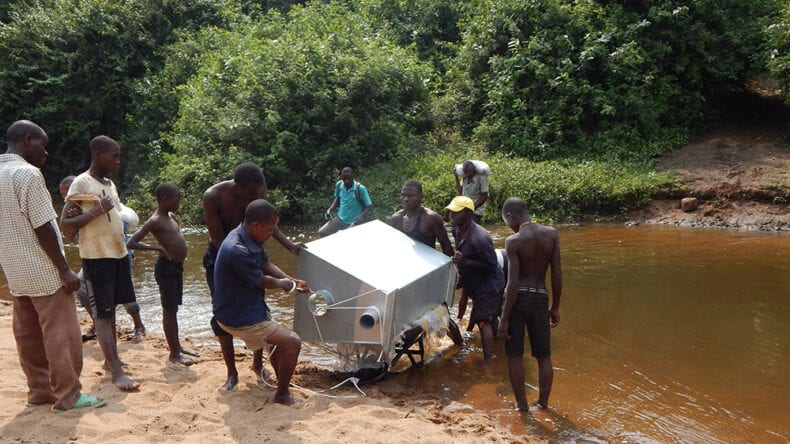Sustainable Livelihoods in the IUCN Save Our Species DNA

Since 2015, IUCN Save Our Species has focused on thematic initiatives including SOS Lemurs and SOS African Wildlife – each with significant livelihood components in their respective portfolios. But generating sustainable livelihoods has been a key conservation activity for IUCN Save Our Species since its launch in response to the Aichi targets declared at the Convention on Biological Diversity’s Conference of the Parties in Nagoya 2010.
The IUCN Save Our Species founding mission focused on three Aichi targets: helping stop the extinction crisis (12), helping attract more funds to conservation (20) and raising awareness about the need to protect wildlife (1). It did this by working to address the priorities identified in the IUCN Red List of Threatened Species ™ and funding existing NGOs worldwide to implement tailored solutions.
Looking back on those first five years of activity from 2011-2015 shows that approximately 40% of the projects funded during that time included a livelihood component.
Almost half of the projects with livelihoods activities (47%) took place across Africa followed by 42% across Asia and Oceania while the remainder (11%) were implemented across Central and Latin America. Characteristic of the IUCN Save Our Species portfolio at the time, there was also a broad taxonomic spread with equal numbers of bird, reptile, plant, amphibian and fish projects even if the vast majority targeted mammal species (21 projects).
Indeed, project solutions were as diverse as target species and circumstances. Three examples from this era illustrate that clearly. These include a cycad conservation project in Uganda, a Tree-kangaroo project in Papua New Guinea’s remote Huon peninsula and an amphibian conservation project in Guatemala’s Sierra Caral mountain range.
In Uganda a Dutch NGO called PROTOS worked with local communities around the Mpanga Gorge to build a pump and pipeline system that would provide a steady clean supply of river water to thirsty livestock living in the vicinity above the gorge.
Eliminating the need to make the tiring journey on foot to the riverbed for herders and their animals, while clearly demarcating protected cycad habitat around the river course, strengthened the chances of recovery for the Critically Endangered Muhure cycad (Encephalartos whitelockii) endemic to the gorge and often trampled by cattle or destroyed by slash and burn agricultural practices. Visit the project profile page to learn more.
In the remote Huon peninsula of Papua New Guinea, another grantee, US-based Woodland Park Zoo worked with local communities to protect populations of Endangered Huon Tree-kangaroos (Dendrolagus matschiei) and their forest habitat. This was done by developing a sustainable high value coffee export business delivering products to a Seattle-based coffee shop chain. In turn this reduced the dependency on rice growing which was impacting habitat integrity.
Such success required significant coordination and outreach to create community based land-use plans and maps, as well as ongoing capacity building in terms of coffee production and marketing, complemented by support for local schools’ education curricula. Visit the project profile page to learn more.
In Guatemala, local NGO Fundaeco worked with communities in the Sierra Caral to protect the largest contiguous forest remnant in the region – also home to numerous endemic and threatened amphibians.
Activities focused on fostering community based eco-tourism leveraging the attraction of these unique amphibians. The breakthrough came when Sierra Caral was declared a National Protected Area in 2015 by the Guatemalan government – the first Guatemalan protected area created in almost ten years. Visit the project profile page to learn more.
There are many other success stories and tailored solutions implemented by a range of NGOs working to protect different threatened species while collaborating with local communities. Despite the uniqueness of each project, there are standard metrics we can use to measure success but perhaps the one overarching guideline is the value of local knowledge and community participation to ensuring lasting success.
To learn more about the sustainable livelihoods why not read other recent articles and news from SOS African Wildlife, SOS Lemurs and the Integrated Tiger Habitat Conservation Programme.










